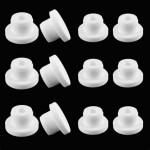Essential Aspects of Small Bathtub Size
When space is limited, selecting the right small bathtub size is crucial to ensure both functionality and comfort. Here are some essential aspects to consider:
1. Space Constraints
Measure the available space in your bathroom, including the walls, door, and any fixtures. Consider the placement of the bathtub, whether it will be freestanding or built-in, and leave adequate clearance for easy access.
2. Tub Length and Width
The length and width of the bathtub determine the amount of space available for bathing. For small bathrooms, consider a bathtub with a length of around 54-60 inches and a width of around 30-36 inches. This size provides sufficient room to stretch out comfortably while conserving space.
3. Tub Depth
The tub depth influences the amount of water it holds and the level of immersion. For small bathtubs, a depth of around 14-16 inches is ideal, ensuring a relaxing bathing experience without overpowering the space.
4. Shape and Design
Small bathtubs come in various shapes, including rectangular, round, and oval. Choose a shape that complements the bathroom decor and maximizes space utilization. Consider a bathtub with a curved edge or asymmetrical design to create a more spacious feel.
5. Fixtures and Accessories
Fixtures such as faucets, showerheads, and grab bars enhance the functionality and safety of the bathtub. Select fixtures that are compatible with the bathtub size and design. Consider adding accessories like a shower curtain or a bathtub caddy to optimize space and create a more enjoyable bathing experience.
6. Ergonomics and Comfort
Even in small spaces, bathtub ergonomics are essential for comfort. Look for bathtubs with a comfortable lumbar support and a sloped back to prevent slipping. Adequate legroom is also important to ensure a relaxing and enjoyable bath.
7. Material and Durability
The material of the bathtub affects its durability and aesthetics. Acrylic, fiberglass, and cast iron are common materials used for small bathtubs. Consider the frequency of use, cleaning requirements, and desired lifespan when selecting a material.
Conclusion
Choosing the right small bathtub size is a blend of space optimization and comfort considerations. By carefully evaluating the available space, bathtub dimensions, shape, fixtures, ergonomics, and material, you can create a functional and inviting bathroom environment that meets your needs and enhances your bathing experience.

60 Inches Or Less Bathtubs 11 Small For Bathrooms

What Size Is A Small Bath Ideal Baths For Bathrooms

Standard Bathtub Sizes 2024 Guide Modernize

Standard Bathtub Sizes Reference Guide To Common Tubs Tub Small

Small Bathtubs Under 5

Small Baths Ideal For Bathrooms Duravit

Small Baths Ideal For Bathrooms Duravit

Bathtub Dimensions In Feet All You Need To Know

Bathtub Sizes Standard Tub Size Guide

Mini Japanese Bathtub Small Corner Sizes Square Acrylic 1100mm La Moderno








